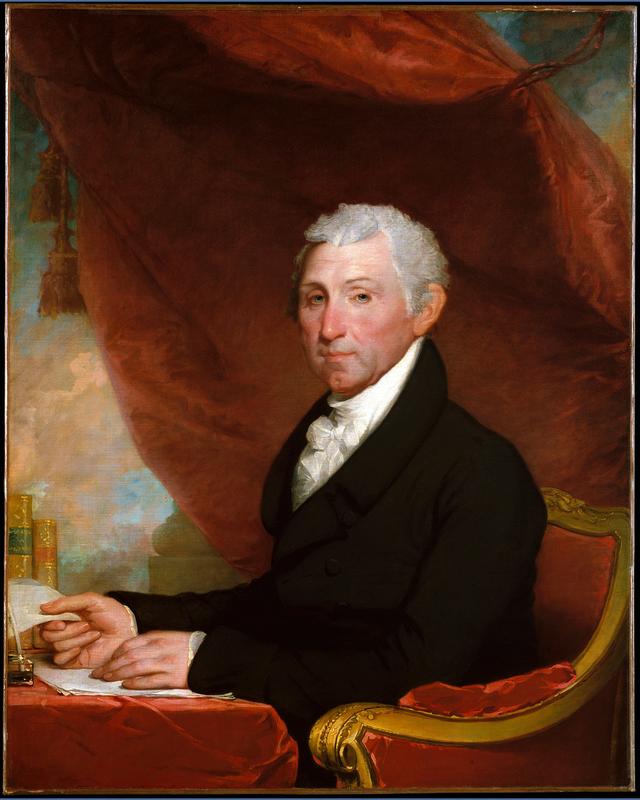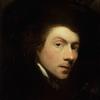More about James Monroe

Contributor
This portrait of James Monroe may look like just a typical portrait, and the artist Gilbert Stuart would assure you that it is indeed.
For this portrait of James Monroe, Stuart took his classic approach toward portraits of government men - big curtains, a ¾ pose, a desk with books, pens, and documents, and lots of the color red. In case you don’t believe me, take a look at the George Washington Lansdowne Portrait.
Monroe sat for Stuart’s portraits on a few different occasions, but this one specifically was commissioned for John Doggett, a local framer and gallery owner who framed and sold many of Stuart’s portraits over the years. This portrait was intended to be one of a series of five paintings of each of the first five presidents, but only Monroe’s and Madison’s survived. Those of Washington, Adams, and Jefferson were destroyed in an 1851 fire in the Library of Congress. Talk about a hot mess. After Doggett died, this portrait passed hands between various wealthy Americans, including the Civil War Union Army Colonel, Peter A. Porter.,
President Monroe was the last of the founding fathers to serve as the president. He was the fifth president of the United States from 1817-1825, and his re-election in 1821 was the last election to go more or less unchallenged in US history. Monroe could never really let go of the whole “founding father” thing though, and he became known for how old-fashioned he dressed. People even referred to him as “The Last Cocked Hat.”
Not long after this portrait’s conception, Monroe would pass the Monroe Doctrine which famously claimed all United States colonies in North America and South America as off-limits to Europe. Any interference would be taken as a direct offense against the United States. Monroe is also the only President other than Washington to have a capital city named after him. The city of Monrovia in Liberia was named after Monroe who encouraged a group of previously enslaved people to settle in Liberia. The group made it across the Atlantic to Liberia, where they traded various American technologies (i.e., weapons, utensils, and drinks) for land. They named their city Monrovia, and the Port City now makes up 30% of the population of Liberia.
Sources
- The Metropolitan Museum of Art, I.e. The Met Museum. Accessed August 16, 2018. https://www.metmuseum.org/art/collection/search/12668.
- "[James Monroe, Fifth President of the United States]." Apple Computers: This Month in Business History (Business Reference Services, Library of Congress). Accessed August 16, 2018. https://www.loc.gov/resource/pga.11882/
- "Presidential Portraits." Home Page of History.org : The Colonial Williamsburg Foundation's Official History and Citizenship Site. Accessed August 16, 2018. http://www.history.org/foundation/journal/spring07/portraits.cfm
- Ungar, Sanford J. "Liberia." The Atlantic. June 01, 1981. Accessed August 16, 2018. https://www.theatlantic.com/magazine/archive/1981/06/liberia/376303/.











